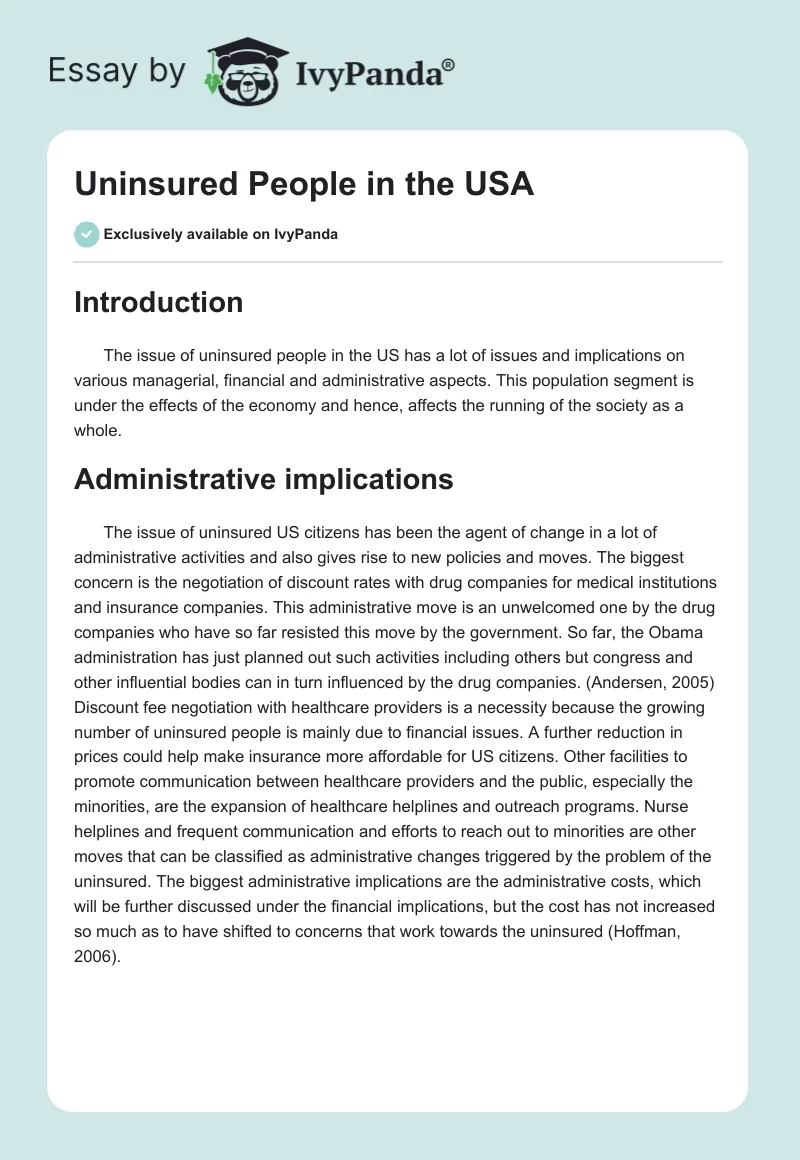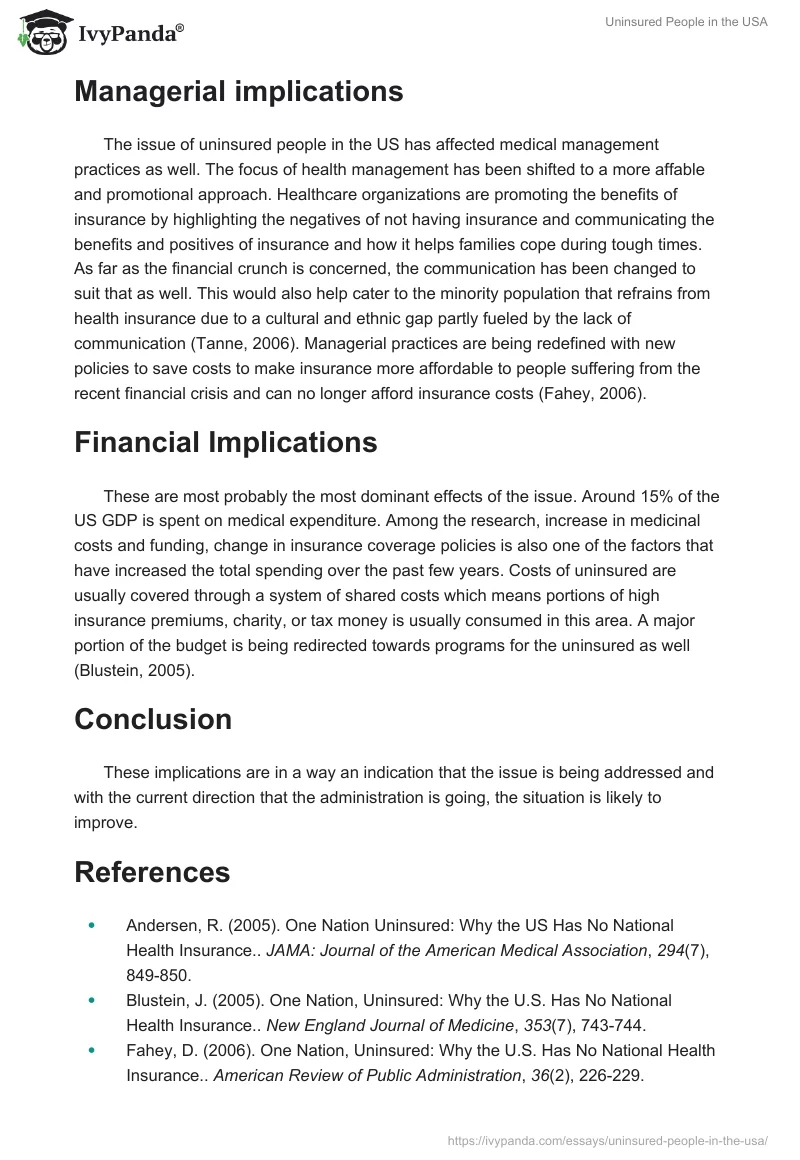Introduction
The issue of uninsured people in the US has a lot of issues and implications on various managerial, financial and administrative aspects. This population segment is under the effects of the economy and hence, affects the running of the society as a whole.
Administrative implications
The issue of uninsured US citizens has been the agent of change in a lot of administrative activities and also gives rise to new policies and moves. The biggest concern is the negotiation of discount rates with drug companies for medical institutions and insurance companies. This administrative move is an unwelcomed one by the drug companies who have so far resisted this move by the government. So far, the Obama administration has just planned out such activities including others but congress and other influential bodies can in turn influenced by the drug companies. (Andersen, 2005) Discount fee negotiation with healthcare providers is a necessity because the growing number of uninsured people is mainly due to financial issues. A further reduction in prices could help make insurance more affordable for US citizens. Other facilities to promote communication between healthcare providers and the public, especially the minorities, are the expansion of healthcare helplines and outreach programs. Nurse helplines and frequent communication and efforts to reach out to minorities are other moves that can be classified as administrative changes triggered by the problem of the uninsured. The biggest administrative implications are the administrative costs, which will be further discussed under the financial implications, but the cost has not increased so much as to have shifted to concerns that work towards the uninsured (Hoffman, 2006).
Managerial implications
The issue of uninsured people in the US has affected medical management practices as well. The focus of health management has been shifted to a more affable and promotional approach. Healthcare organizations are promoting the benefits of insurance by highlighting the negatives of not having insurance and communicating the benefits and positives of insurance and how it helps families cope during tough times. As far as the financial crunch is concerned, the communication has been changed to suit that as well. This would also help cater to the minority population that refrains from health insurance due to a cultural and ethnic gap partly fueled by the lack of communication (Tanne, 2006). Managerial practices are being redefined with new policies to save costs to make insurance more affordable to people suffering from the recent financial crisis and can no longer afford insurance costs (Fahey, 2006).
Financial Implications
These are most probably the most dominant effects of the issue. Around 15% of the US GDP is spent on medical expenditure. Among the research, increase in medicinal costs and funding, change in insurance coverage policies is also one of the factors that have increased the total spending over the past few years. Costs of uninsured are usually covered through a system of shared costs which means portions of high insurance premiums, charity, or tax money is usually consumed in this area. A major portion of the budget is being redirected towards programs for the uninsured as well (Blustein, 2005).
Conclusion
These implications are in a way an indication that the issue is being addressed and with the current direction that the administration is going, the situation is likely to improve.
References
- Andersen, R. (2005). One Nation Uninsured: Why the US Has No National Health Insurance.. JAMA: Journal of the American Medical Association, 294(7), 849-850.
- Blustein, J. (2005). One Nation, Uninsured: Why the U.S. Has No National Health Insurance.. New England Journal of Medicine, 353(7), 743-744.
- Fahey, D. (2006). One Nation, Uninsured: Why the U.S. Has No National Health Insurance.. American Review of Public Administration, 36(2), 226-229.
- Hoffman, B. (2006). Tell Me Again: Why Is There No National Health Insurance in the United States?. Journal of Health Politics, Policy & Law, 31(4), 839-848.
- Tanne, J. (2006). Number on uninsured middle class US citizens grows.. BMJ: British Medical Journal, 332(7549), 1047-1047.


